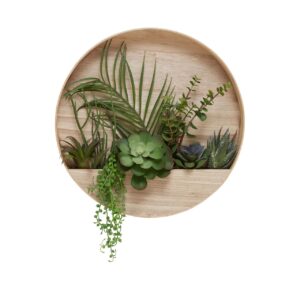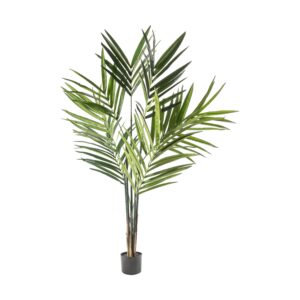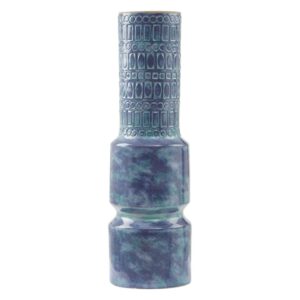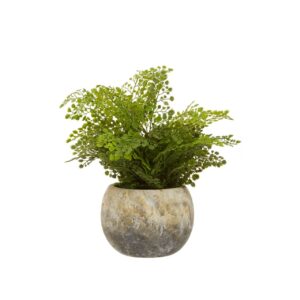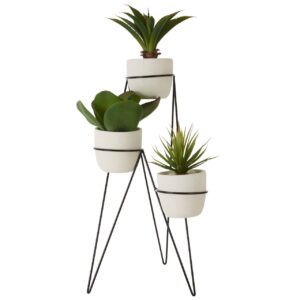Inspiration
BRINGING NATURE INDOORS: THE ART OF CITY GARDEN DESIGN
Unveil Luxury, Unleash Comfort – Eclectic Niche.
Urban living often comes with limited access to green spaces. But what if you could bring the tranquility and beauty of nature indoors? City garden design has emerged as a transformative trend in interior design, offering urban dwellers a refreshing escape amidst the concrete jungle. In recent years, the integration of greenery into urban living spaces has gained significant momentum, reflecting a growing awareness of the benefits it brings to our well-being and environment. From small apartments to corporate offices and public buildings, city garden design has become a staple feature, redefining the way we perceive and interact with our surroundings.
The allure of city garden design lies in its ability to blur the boundaries between indoor and outdoor spaces, creating a harmonious connection with nature within the confines of urban living. By incorporating lush foliage, vibrant flowers, and serene water features, designers are not only enhancing the aesthetic appeal of interiors but also fostering a sense of tranquility and rejuvenation amidst the hustle and bustle of city life.
Beyond its visual appeal, the integration of greenery into urban environments carries a multitude of benefits for both individuals and communities. Studies have shown that exposure to nature, even in urban settings, can have profound effects on mental health, reducing stress, anxiety, and depression. Moreover, plants act as natural air purifiers, improving indoor air quality and mitigating the harmful effects of pollution.
As our cities continue to expand and green spaces become increasingly scarce, the importance of city garden design in interior design cannot be overstated. It represents a conscious effort to reclaim our connection to nature and create healthier, more sustainable living environments for present and future generations. In the following sections, we will delve deeper into the principles, practices, and inspirations behind city garden design, exploring how it is reshaping the landscape of interior design and urban living.

Importance of Green Spaces in Urban Interiors
Green spaces play a crucial role in urban interiors for several reasons. Green spaces in urban interiors are essential for creating healthier, more sustainable, and more livable environments for urban dwellers. They contribute to a sense of community, promote environmental stewardship, and enhance the overall quality of urban life. Here’s a detailed explanation of the importance/benefits of green spaces in urban interiors:
- Enhanced Well-being: Access to greenery in urban interiors has been linked to improved mental health and well-being. A study published in the journal Environmental Science & Technology found that individuals living in areas with more green space reported lower levels of psychological distress and better overall mental health. Similarly, research published in the International Journal of Environmental Research and Public Health has shown that exposure to green spaces, such as parks and gardens, is associated with reduced symptoms of depression and anxiety.
In urban interiors, features such as living walls, vertical gardens, and indoor planters provide opportunities for residents and workers to connect with nature on a daily basis, promoting relaxation and improving mood. - Air Quality Improvement: Indoor plants are known for their air-purifying abilities, absorbing pollutants such as volatile organic compounds (VOCs) and carbon dioxide and releasing oxygen into the air.
Incorporating a variety of indoor plants in urban interiors can help mitigate the effects of indoor air pollution, which can be worsened by factors such as vehicle emissions, construction activities, and industrial pollution. - Temperature Regulation: Green spaces help regulate temperature within urban interiors, providing natural cooling during hot weather and insulation during cold weather. A study published in the journal Building and Environment investigated the cooling effect of green roofs in urban environments and found that they can significantly reduce indoor temperatures, leading to energy savings and improved thermal comfort.
- Noise Reduction: Plants have the ability to absorb sound, helping to reduce noise levels within urban interiors. This can create a more peaceful and comfortable environment for residents, workers, and visitors alike.
- Biophilic Design: City garden design is often rooted in biophilic design principles, which seek to reconnect humans with nature in built environments. By integrating elements of nature, such as plants, water features, and natural materials, into urban interiors, designers can create spaces that resonate with our innate connection to the natural world, promoting health, productivity, and creativity.
The Amazon Spheres in Seattle, Washington, serve as a striking example of biophilic design in urban interiors. These spherical glass structures house a diverse collection of plants from around the world, creating a lush indoor rainforest environment where employees can work and relax. - Space Optimization: In densely populated urban areas where space is limited, city garden design offers a creative solution for maximizing green space. Vertical gardens, rooftop gardens, and indoor gardens allow urban dwellers to enjoy the benefits of nature without sacrificing valuable floor space.
- Community Engagement: City garden design can also foster a sense of community and social interaction in urban environments. Public green spaces, such as community gardens and urban parks, provide opportunities for residents to connect with nature and each other, strengthening social bonds and promoting a sense of belonging.
- Promotes Biodiversity: Furthermore, urban gardens promote biodiversity by providing habitats for birds, insects, and other wildlife, thereby enhancing ecological balance within urban landscapes. They also help mitigate the urban heat island effect by reducing surface temperatures and providing cooling shade, creating more comfortable microclimates for residents.
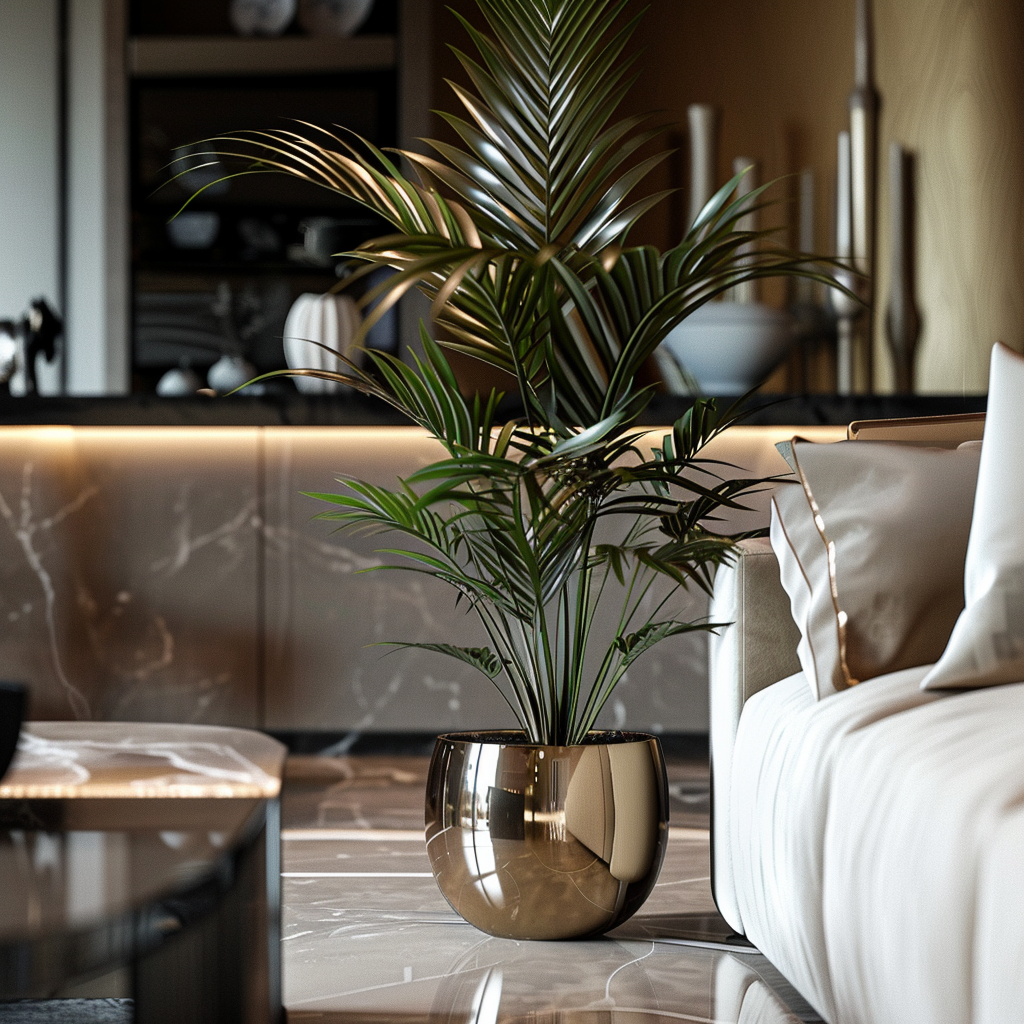
Types of City Garden Design
City garden encompasses a variety of styles each tailored to suit the unique characteristics and constraints of urban environments. By incorporating these types of city garden design into urban interiors, designers can create vibrant, sustainable, and livable environments that benefit both residents and the surrounding ecosystem. Here are some common types of city garden design:
- Vertical Gardens: Vertical gardens, also known as living walls or green walls, are a popular choice for urban interiors with limited horizontal space. These gardens are created by attaching plants to a vertical surface, such as a wall or façade, using specially designed systems that provide structural support and irrigation. Vertical gardens can be installed indoors or outdoors and offer opportunities to incorporate a diverse array of plant species, creating a striking visual focal point while maximizing space.
- Rooftop Gardens: Rooftop gardens utilize the unused space on building rooftops to create green oases in urban environments. These gardens can range from simple container gardens to elaborate landscaped spaces with trees, shrubs, and seating areas. Rooftop gardens provide numerous benefits, including insulation, stormwater management, and habitat creation, while also offering residents and workers a peaceful retreat with panoramic views of the city skyline.
- Indoor Gardens: Indoor gardens bring the beauty and benefits of nature indoors, transforming interior spaces into lush, green sanctuaries. These gardens can take various forms, including potted plants, terrariums, atriums, and conservatories. Indoor gardens are particularly well-suited to spaces with limited access to natural light, as they allow for the cultivation of shade-loving plants and can improve indoor air quality and humidity levels.
- Community Gardens: Community gardens are shared green spaces where residents come together to grow food, flowers, and other plants. These gardens can be located on vacant lots, in parks, or on rooftops and provide opportunities for community engagement, social interaction, and education. Community gardens contribute to food security, promote healthy eating habits, and foster a sense of pride and ownership among participants.
- Pocket Parks: Pocket parks, also known as mini parks or parklets, are small green spaces tucked into unused or underutilized areas within urban neighborhoods. These parks typically feature seating areas, plantings, and sometimes recreational amenities such as playgrounds or fitness equipment. Pocket parks provide opportunities for relaxation, recreation, and socializing in densely populated urban areas where larger parks may be scarce.
- Green Streetscapes: Green streetscapes integrate vegetation into urban streetscapes to enhance aesthetics, improve air quality, and mitigate the effects of heat and pollution. Green streetscape elements may include street trees, planters, bioswales, and permeable paving materials. These features help create a more pedestrian-friendly and environmentally sustainable urban environment while also reducing the urban heat island effect and enhancing biodiversity.
Planning and Layout of an Indoor City Garden
Effective planning and layout are fundamental aspects of city garden design, ensuring that urban green spaces are not only aesthetically pleasing but also functional, sustainable, and optimized for the available space. This involves a thorough assessment of space constraints, the creation of functional zones, and the strategic use of vertical space to maximize greenery and usability.
A. Assessing Space Constraints and Limitations
The first step in city garden design is to assess the space available and identify any constraints or limitations that may impact the design process. This includes considerations such as the size and shape of the area, existing structures or obstacles, sunlight exposure, soil quality, and access to water sources. For example, a small rooftop garden may have limited weight-bearing capacity, requiring lightweight materials and container gardening techniques. Similarly, an urban alleyway garden may face challenges such as limited sunlight and narrow pathways, necessitating shade-tolerant plants and efficient use of vertical space. By conducting a thorough assessment, designers can understand the unique characteristics and limitations of the space, allowing them to tailor the garden design to its specific requirements while optimizing functionality and usability.
B. Designing Functional Zones
Once space constraints are identified, the next step is to design functional zones within the garden layout. This involves dividing the space into different areas based on intended uses and activities, such as seating areas, planting beds, pathways, and recreational spaces. Seating areas can be strategically placed to provide comfortable seating options for relaxation, socializing, and outdoor dining. These areas may include benches, chairs, tables, and other seating arrangements that encourage people to enjoy the garden and its surroundings. Planting beds are essential for cultivating a variety of plants, including ornamentals, herbs, vegetables, and pollinator-friendly flowers. Designing raised beds or using containers can help optimize growing conditions, improve soil drainage, and prevent soil compaction in urban environments. Pathways play a crucial role in connecting different garden zones and facilitating movement throughout the space. Well-designed pathways should be accessible, safe, and visually appealing, using materials such as gravel, paving stones, or recycled materials to create durable and attractive walkways. By delineating functional zones, designers can create a cohesive and organized layout that meets the diverse needs of urban garden users, from leisurely strolls and contemplative spaces to active gardening and social gatherings.
C. Maximizing Vertical Space
Densely populated cities where horizontal space is limited, we should focus on maximizing vertical space. Vertical gardening techniques such as trellises, vertical gardens, and hanging plants offer innovative solutions for adding greenery, biodiversity, and visual interest to urban environments. Trellises and vertical gardens utilize vertical surfaces such as walls, fences, and buildings to support climbing plants, vines, and espaliered trees. These vertical structures not only maximize planting space but also create vertical green screens, improve air quality, and provide habitat for beneficial insects and birds. Hanging plants, hanging baskets, and suspended planters are effective ways to add vegetation to balconies, terraces, and overhead structures. These hanging elements not only add a decorative touch but also make use of unused airspace, creating lush and inviting environments in compact urban settings. Additionally, incorporating green roofs and living walls into city garden designs can further enhance vertical greening efforts, reduce urban heat island effects, and contribute to energy efficiency and biodiversity conservation.
Design Elements for Functionality and Aesthetics
Designing indoor city gardens involves incorporating various elements and features to enhance functionality, aesthetics, and ambiance. This includes integrating hardscape elements, adding focal points, and enhancing privacy and noise reduction for a harmonious and inviting garden space.
A. Incorporating Hardscape Elements
Hardscape elements play a crucial role in defining the structure and layout of indoor city gardens. Consider incorporating the following hardscape features:
Paving: Use paving materials such as tiles, stones, or concrete pavers to create pathways, patios, or designated seating areas within the garden. Choose materials that complement the overall design theme and provide durability and slip resistance.
Decking: Install wooden or composite decking to add warmth and natural appeal to the garden. Decked areas can serve as platforms for seating, dining, or lounging, creating functional and stylish outdoor living spaces.
Containers: Utilize a variety of containers, including pots, planters, and raised beds, to accommodate plants of different sizes and types. Choose containers that harmonize with the overall design scheme and allow for easy maintenance and plant care.
B. Adding Focal Points
Focal points are key elements that draw attention and add visual interest to indoor city gardens. Consider incorporating the following focal points:
Sculptures: Install sculptures or art installations that complement the garden theme and evoke a sense of artistic expression. Choose sculptures made from durable materials suitable for indoor environments.
Water Features: Integrate water features such as fountains, ponds, or water walls to create a soothing and tranquil ambiance. Water features not only add aesthetic value but also contribute to relaxation and stress reduction.
Fire Pits: Install a fire pit or fire bowl for warmth, ambiance, and social gatherings. Choose fire features that are safe for indoor use and comply with fire safety regulations.
C. Enhancing Privacy and Noise Reduction
Creating a sense of privacy and reducing noise pollution is essential for an enjoyable indoor garden experience. Explore the following strategies:
Green Screens: Use trellises, living walls, or vertical gardens as green screens to create privacy partitions and visual barriers. These screens can also serve as vertical plant displays, adding greenery and texture to the space.
Barriers: Install physical barriers such as decorative fences, panels, or room dividers to separate the garden area from surrounding spaces and mitigate noise from adjacent areas.
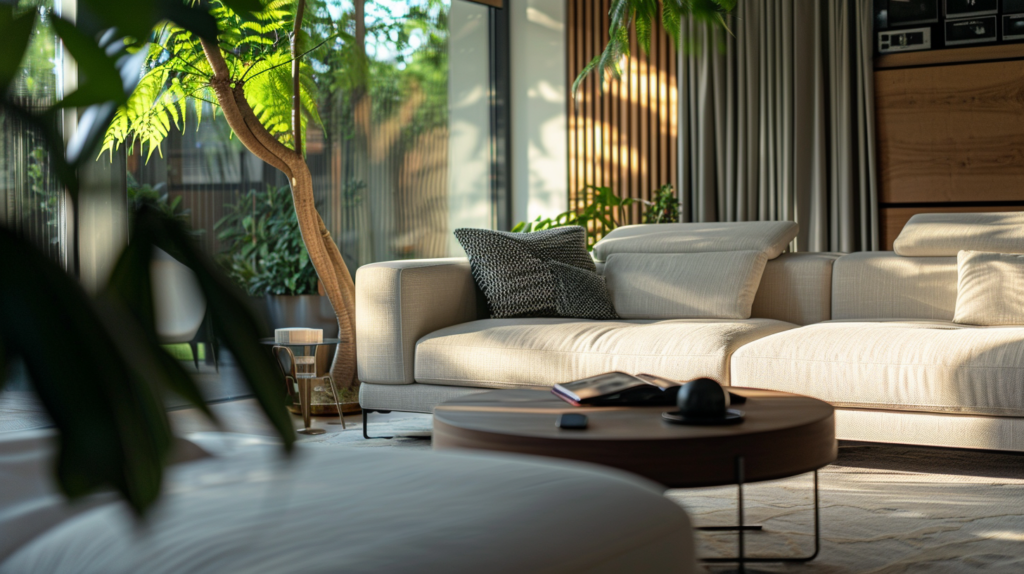
Plant Selection and Maintenance for Indoor City Gardens
Selecting the right plants for indoor city gardens is crucial for creating a thriving green space that enhances your living or working environment. The three major things to watch out for are the maintenance requirements, light requirements and aesthetics of your interior space. Here are some tips for choosing low-maintenance plants suitable for indoor environments, along with suggestions based on light availability and desired aesthetics.
- Maintenance Requirements:
When it comes to indoor gardening, understanding the difference between high maintenance and low maintenance plants is crucial for creating a thriving green space that fits your lifestyle and preferences. High maintenance plants typically require more attention and care, particularly in terms of watering frequency and environmental conditions. Examples of high maintenance plants include ferns such as the Boston Fern and Maidenhair Fern, which thrive in consistently moist soil and high humidity levels. Orchids, like the Phalaenopsis Orchid, also fall into this category, needing specific watering schedules and well-draining soil to prevent root rot. Tropical plants such as Calathea and Fiddle Leaf Fig demand regular watering to maintain optimal moisture levels, especially in environments with low humidity. On the other hand, low maintenance plants are more forgiving and require less frequent watering and upkeep. Succulents like Aloe Vera and Jade Plant store water in their leaves and prefer infrequent watering, allowing the soil to dry out between waterings. The Snake Plant, known scientifically as Sansevieria, is incredibly resilient and can thrive with minimal care, preferring dry conditions and occasional watering. Similarly, the ZZ Plant (Zamioculcas zamiifolia) is highly adaptable to various conditions, including low light and sporadic watering, making it an excellent choice for low-maintenance indoor gardens. By understanding the differences between high maintenance and low maintenance plants and selecting varieties that align with your lifestyle and care preferences, you can create a beautiful and thriving indoor garden that enhances your living or working space. - Light Requirements
Knowledge of the distinction between indoor plants based on their light requirements is essential for creating a successful indoor garden that thrives in your specific environment. High light plants typically need more sunlight to thrive and may struggle in low light conditions. Examples of high light plants include succulents like Echeveria and Haworthia, which thrive in bright, direct sunlight and need at least six hours of sunlight per day to flourish. Similarly, herbs such as basil and rosemary require ample sunlight to produce robust growth and flavorful leaves, making them ideal for sunny windowsills or well-lit areas. Tropical plants like Bird of Paradise and Croton also fall into this category, needing bright, indirect light to maintain their vibrant foliage and lush appearance.
On the other hand, low light plants are better suited to environments with limited natural light and can thrive in shaded or dimly lit spaces. Examples of low light plants include pothos varieties like Marble Queen and Golden Pothos, which are known for their ability to tolerate low light conditions and can thrive in areas with indirect sunlight or fluorescent lighting. The Peace Lily (Spathiphyllum) is another low light plant that can flourish in shady corners, producing elegant white flowers even in dimly lit rooms. Additionally, the Cast Iron Plant (Aspidistra elatior) is renowned for its resilience in low light conditions, making it an excellent choice for spaces with minimal natural light, such as hallways or bathrooms. - Aesthetics:
The aesthetic considerations in indoor gardening play a significant role in determining the choice of plants, as they directly impact the visual appeal and overall ambiance of the indoor space. Different plant species possess unique characteristics in terms of size, shape, color, texture, and growth habit, allowing them to contribute to various design styles and aesthetics. Here’s a detailed explanation of how aesthetics affect the choice of plants, along with examples:
1. Size and Shape:
– The size and shape of plants influence the overall composition and balance of the indoor garden. Taller plants can add vertical interest and create a sense of height, while trailing or cascading plants can soften edges and add movement to the space.
– For example, tall and slender plants like the Fiddle Leaf Fig (Ficus lyrata) or the Swiss Cheese Plant (Monstera deliciosa) can make a bold statement as focal points in contemporary or minimalist interiors. In contrast, trailing plants like the String of Pearls (Senecio rowleyanus) or the Heartleaf Philodendron (Philodendron scandens) can add a touch of whimsy and charm when cascading from shelves or hanging planters.
2. Color:
– The color of foliage and flowers can dramatically impact the mood and atmosphere of the indoor space. Vibrant hues can create a lively and energetic ambiance, while softer shades can evoke a sense of tranquility and relaxation.
– For example, plants with colorful foliage such as the Calathea ‘Medallion’ or the Croton (Codiaeum variegatum) can add a pop of color to neutral interiors, infusing them with warmth and personality. Similarly, flowering plants like the African Violet (Saintpaulia) or the Peace Lily (Spathiphyllum) can introduce bursts of color and visual interest to tabletops or windowsills.
3. Texture:
– The texture of leaves, stems, and flowers can add depth and dimension to the indoor garden, creating visual contrast and tactile interest. Plants with glossy, smooth leaves can reflect light and create a sleek, polished look, while those with textured or fuzzy foliage can add warmth and tactile appeal.
– For example, plants with striking foliage textures such as the Zebra Plant (Aphelandra squarrosa) or the Velvet Calathea (Calathea rufibarba) can create a sense of luxury and sophistication in modern or eclectic interiors. Similarly, succulents like the Echeveria ‘Black Prince’ or the Haworthia ‘Zebra’ with their rosette-shaped leaves and intricate patterns can add a sculptural element to minimalist or desert-inspired designs.
4. Growth Habit:
– The growth habit of plants, including their form, density, and branching pattern, can influence the overall structure and balance of the indoor garden. Compact, bushy plants can create a sense of fullness and density, while airy, open plants can impart a feeling of lightness and spaciousness.
– For example, plants with a mounding or clumping growth habit such as the Pothos (Epipremnum aureum) or the Spider Plant (Chlorophytum comosum) can fill empty corners and provide a sense of lushness and abundance in traditional or bohemian interiors. Conversely, plants with a more architectural or sculptural form like the Snake Plant (Sansevieria) or the Dracaena ‘Janet Craig’ can add a contemporary edge and a sense of structure to modern or minimalist spaces.
By considering these aesthetic factors as well as the lighting and maintenance requirements, you can carefully select plants that complement the desired design style and ambiance of the indoor space, you can create a visually stunning and harmonious indoor garden that enhances the overall aesthetic appeal of your home or office.


